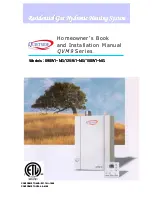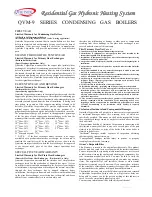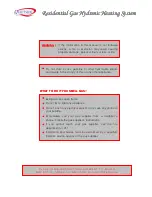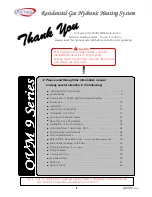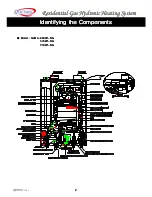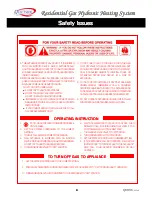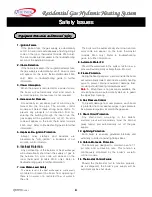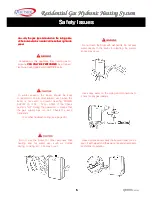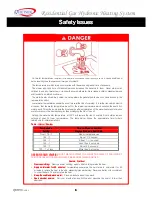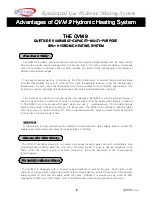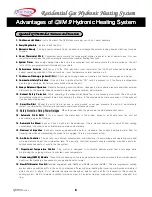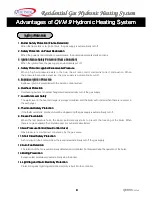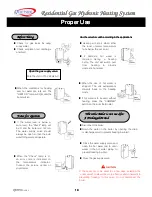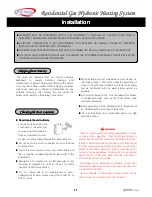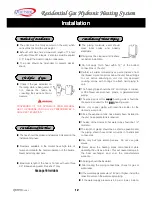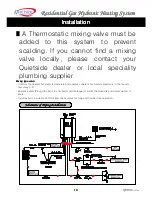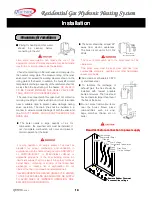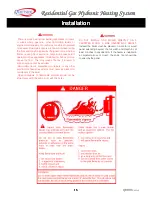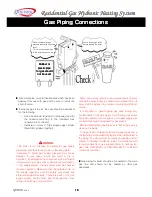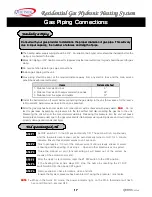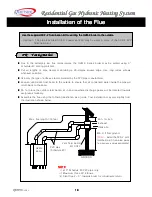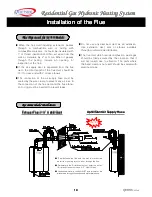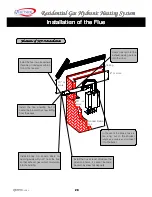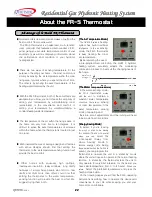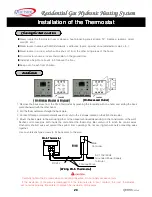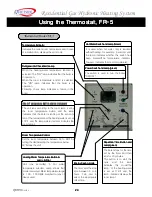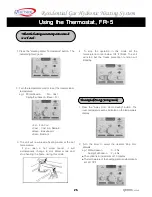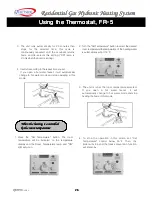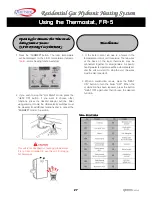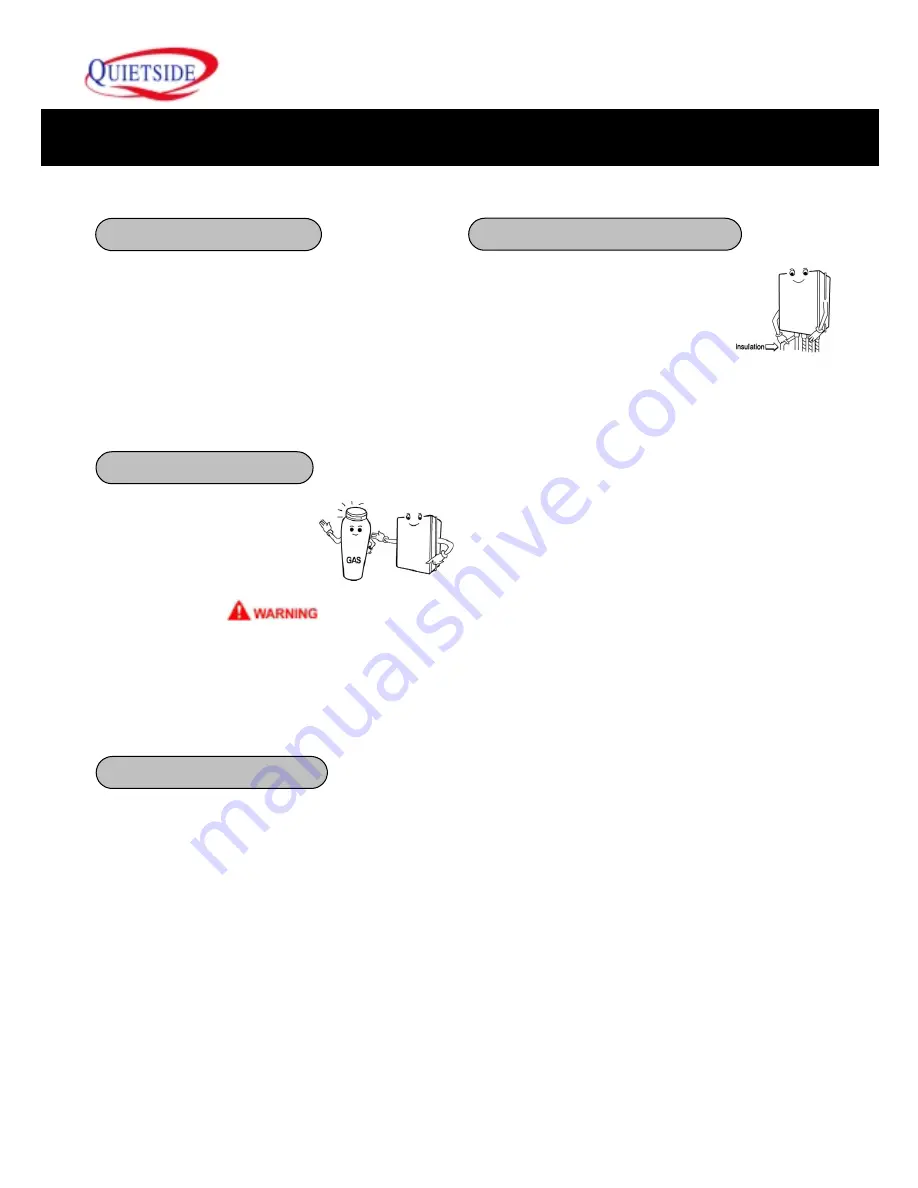
Residential Gas Hydronic Heating System
Residential Gas Hydronic Heating System
Residential Gas Hydronic Heating System
Residential Gas Hydronic Heating System
QVM 9
Series
12
12
12
12
Installation
Installation
Installation
Installation
■
The flue should be properly installed as indicated on the
installation manual.
■
Dampers available in the market have high rate of
failure and disturb the normal operation of the boilers.
Never install any dampers.
■
Maximum length of the flue is 16 feet with upto three
90
°
Elbows being used. Flue
Ø
is 3
”
only.
See page 18 for details
See page 18 for details
See page 18 for details
See page 18 for details
■
Check if the gas indicated on
the rating plate is being used. If
not, change the nozzle by
consulting the service center or
dealers.
CONVERSION OF THIS APPLIANCE FROM NATURAL
GAS TO PROPANE CAN ONLY BE PERFORMED BY A
QUALIFIED TECHNICIAN.
■
The units must be firmly secured on the wall, which
can sufficiently hold the unit weight.
■
Exhaust vent pipe has a maximum length of 16 feet
with upto three 90
°
elbows. Vent pipe must be angled
2-3
°
toward the boiler to return condensate.
■
The units should be grounded to prevent electric
shock.
■
Do not apply torch heat within 12" of the bottom
connections of the unit.
■
Perform all solder connections at a safe distance from
the (brass) male connectors below the unit. Allow fittings
to cool, before attaching to unit. Use only approved
coupling unions with O-rings to attach field piping to
unit.
■
The
‘
heating
’
pipe should be 3/4" and of type-L copper,
or PEX. Never use aluminum, plastic, or galvanized steel
piping.
■
The pipe size used for
supply
supply
supply
supply heating water should be
the same size used for the
return
return
return
return heating water.
■
Use only copper piping with lead-free solder for the
domestic water side.
■
Since the expansion tank has already been installed in
the unit, no separate tank is required.
■
The size of the domestic hot water pipe should be 1/2"
diameter.
■
The length of piping should be as short as possible and
the piping should have minimal number of bends and
connections.
■
Use only ball type isolating valves. Do not use gate
valves.
■
Never leave the heating pipes disconnected while
operating the unit as a boiler. This will cause damage to
the heat exchanger and void the manufacturers
warranty.
■
All piping should be insulated.
■
After making the piping connections, check for gas or
water leaks.
■
If the water supply pressure is 142 psi or higher, install the
reduction valve on the water supply piping.
■
If the water supply pressure is 4.3 psi or lower, install a
■
The piping materials used should
meet local codes and industry
standards.
■
Piping must be cleaned and flushed-
out before installation.
Check
Check
Check
Check the of Gas
the of Gas
the of Gas
the of Gas
Methods of Installation
Methods of Installation
Methods of Installation
Methods of Installation
Installation of Water Piping
Installation of Water Piping
Installation of Water Piping
Installation of Water Piping
Installation of the Flue
Installation of the Flue
Installation of the Flue
Installation of the Flue

